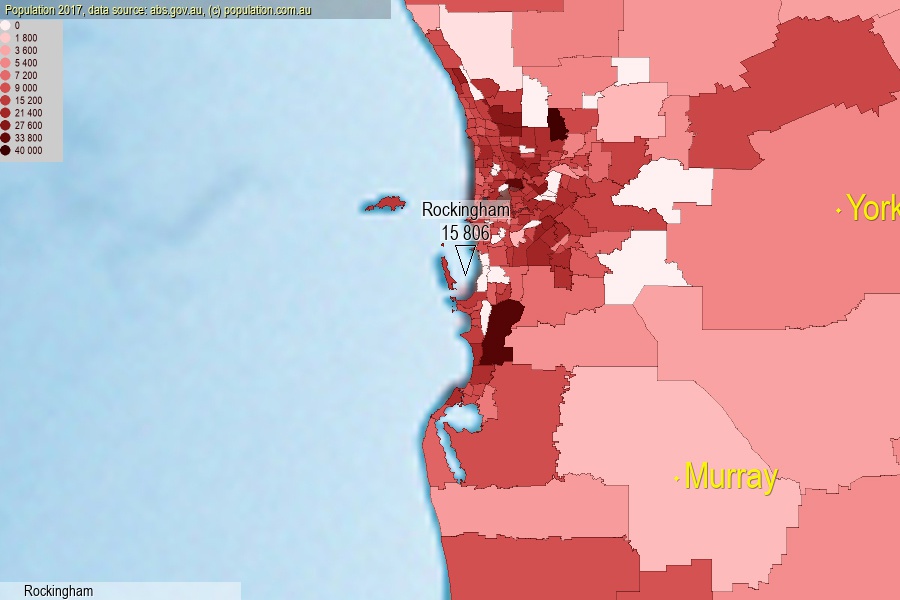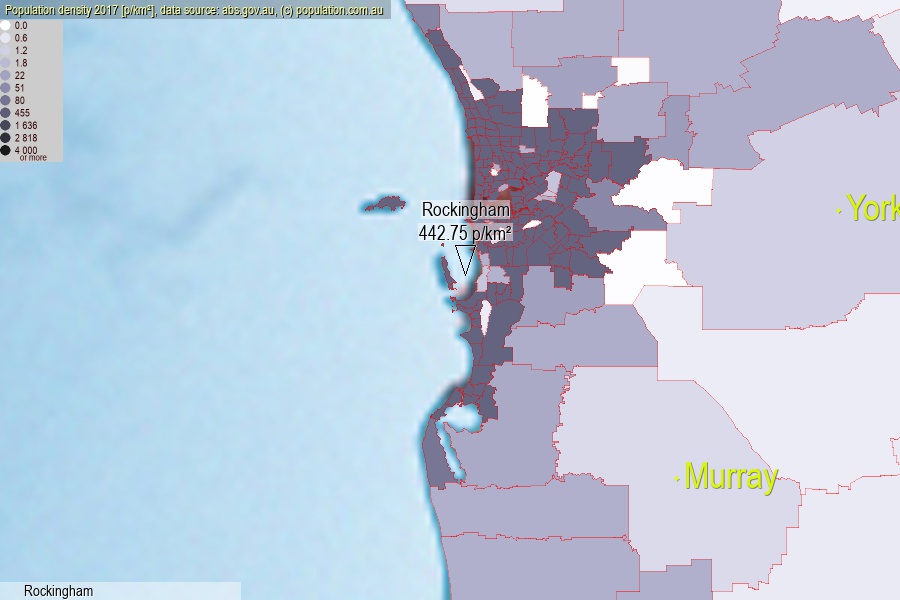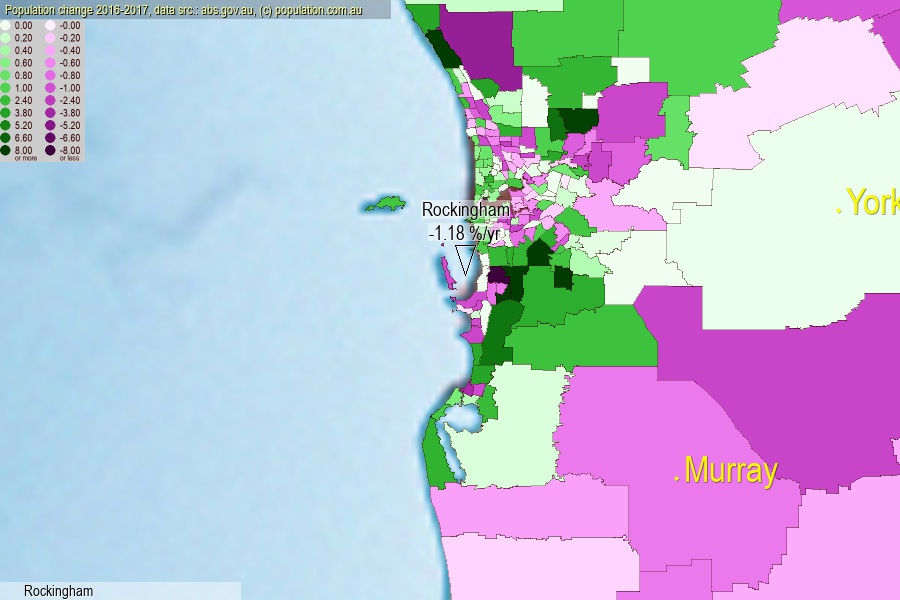 population.com.au
population.com.auLast official estimated population of Rockingham (as Statistical Area Level 2) was 15 806 people (on 2017-06-30)[2]. This was 0.06% of total Australian population and 0.61% of WA population. Area of Rockingham is 35.70 km², in this year population density was 442.75 p/km² . If population growth rate would be same as in period 2016-2017 (-1.18%/yr), Rockingham population in 2025 would be 14 372. [0]



Click to enlarge. Rockingham is located in the center of the images.
Population [people], population density [p./km²] and population change [%/year] [2]
View borders » (new window) [4]
[1991-1992] +1.39 %/Yr.
[1992-1993] +3.74 %/Yr.
[1993-1994] +1.81 %/Yr.
[1994-1995] +2.53 %/Yr.
[1995-1996] +1.56 %/Yr.
[1996-1997] +2.30 %/Yr.
[1997-1998] +0.92 %/Yr.
[1998-1999] +0.88 %/Yr.
[1999-2000] +0.39 %/Yr.
[2000-2001] +0.43 %/Yr.
[2001-2002] -0.18 %/Yr.
[2002-2003] +1.75 %/Yr.
[2003-2004] +3.26 %/Yr.
[2004-2005] +3.35 %/Yr.
[2005-2006] +1.72 %/Yr.
[2006-2007] +2.48 %/Yr.
[2007-2008] +3.01 %/Yr.
[2008-2009] +2.91 %/Yr.
[2009-2010] +2.07 %/Yr.
[2010-2011] +3.01 %/Yr.
[2011-2012] +1.22 %/Yr.
[2012-2013] +0.63 %/Yr.
[2013-2014] -0.13 %/Yr.
[2014-2015] -0.05 %/Yr.
[2015-2016] -0.21 %/Yr.
[2016-2017] -1.18 %/Yr.
[0] Calculated with linear interpolation from officially estimated population
[1] Read more about SA2 and Australian Statistical Geography Standard (ASGS) on abs.gov.au
[2] Population data from Australian Bureau of Statistics (Population and density: 2017; change: 2016-2017)
[3] Digital Boundaries: Australian Statistical Geography Standard (ASGS) 2016.
[4] Border coordinates are simplifyed using Ramer-Douglas-Peucker algorithm.